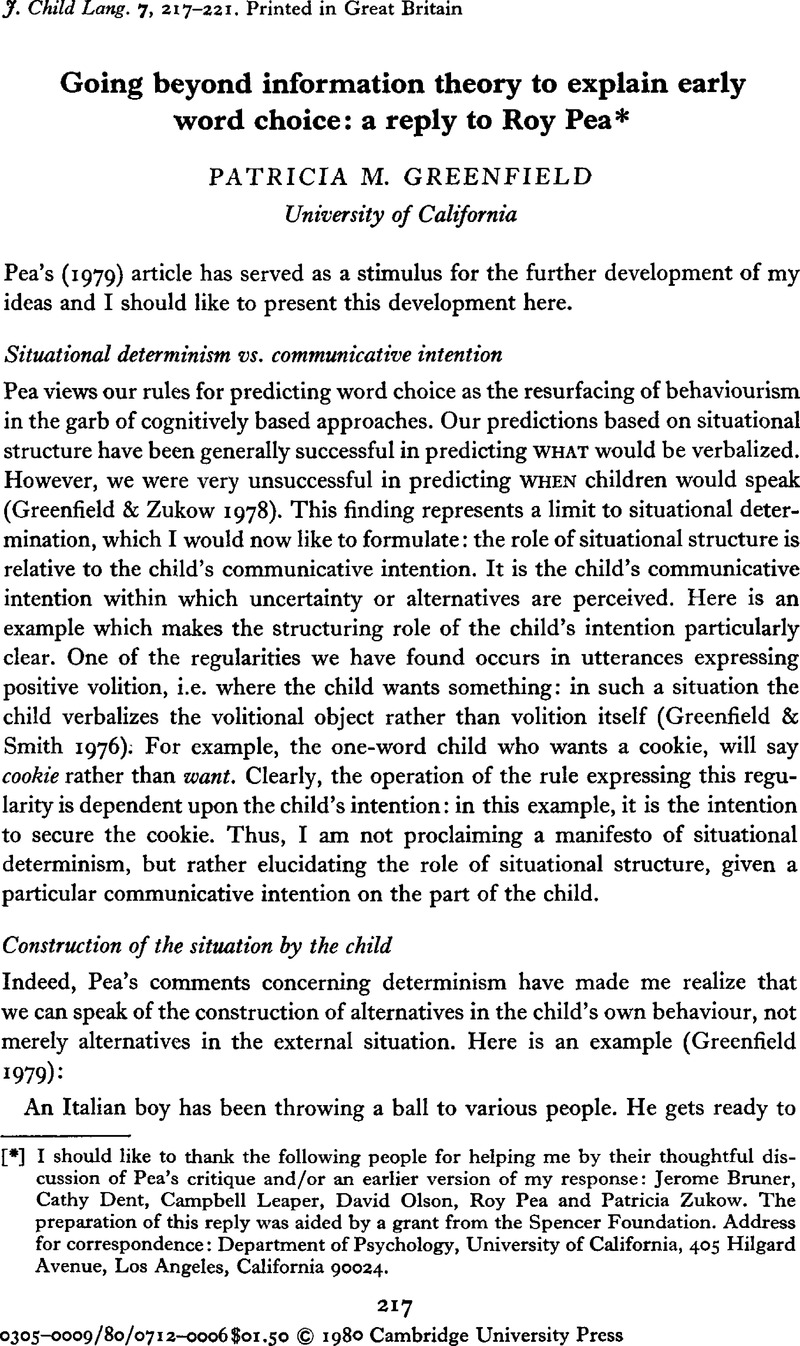Article contents
Going beyond information theory to explain early word choice: a reply to Roy Pea*
Published online by Cambridge University Press: 26 September 2008
Abstract

- Type
- Notes and Discussion
- Information
- Copyright
- Copyright © Cambridge University Press 1980
Footnotes
I should like to thank the following people for helping me by their thoughtful discussion of Pea's critique and/or an earlier version of my response: Jerome Bruner, Cathy Dent, Campbell Leaper, David Olson, Roy Pea and Patricia Zukow. The preparation of this reply was aided by a grant from the Spencer Foundation. Address for correspondence: Department of Psychology, University of California, 405 Hilgard Avenue, Los Angeles, California 90024.
References
REFERENCES
- 5
- Cited by




